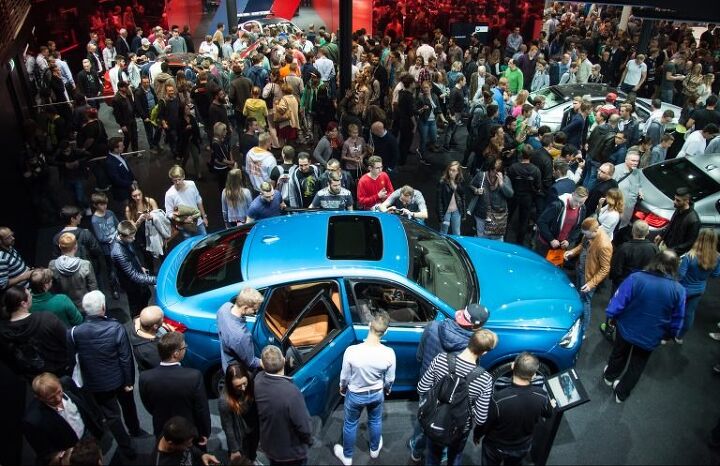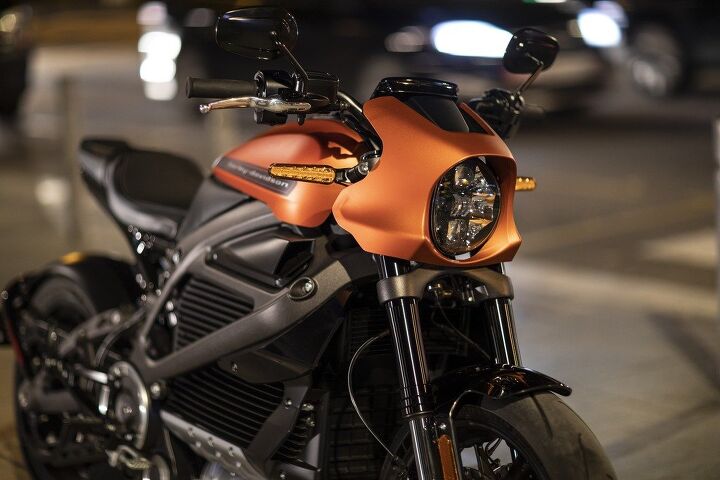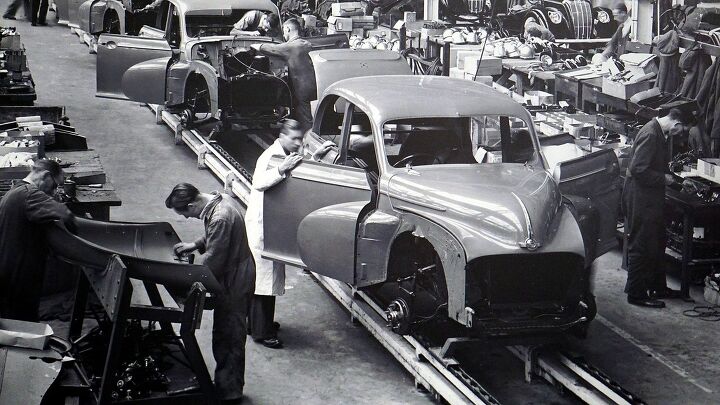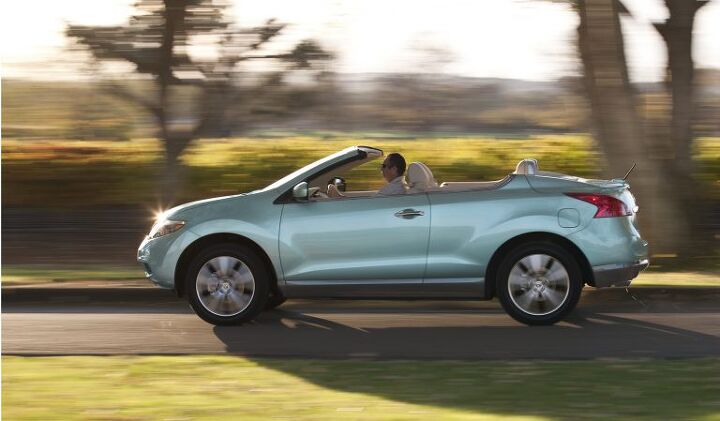#IndustryTrends
Frankfurt Auto Show No Longer in Frankfurt
Verband der Automobilindustrie (VDA), the organizing body of Germany’s International Automobile Exhibition (IAA), has announced it will no longer hold its bi-annual trade show in Frankfurt. Last week, representatives from Berlin, Cologne, Frankfurt, Hamburg, Hanover, Munich and Stuttgart met with VDA to present their concepts for IAA 2021.
Frankfurt has already been taken out of the running, with the group saying the event would no longer take place at the Frankfurt am Main trade fair location after “evaluating all relevant criteria.” Despite being home to the show for decades, attendance has waned, encouraging VDA to examine its options.
Other trade events have undertaken similar changes in an effort to promote turnout amid growing public disinterest. Detroit managed to keep the North American International Auto Show (NAIAS) from leaving town, shifting its timing from January to June. Officially, this was done to allow more opportunities for manufacturers to set up outdoor displays and on-road vehicle demonstrations.
But simply having it take place at a time when Michigan air isn’t bitingly cold is bound to encourage more people to turn up.
As Harley-Davidson Sales Struggle Continues, Company Says New Product Is the Best Response
We’ve kept light tabs on Harley-Davidson over the past few years, typically to chronicle its downward progress in an effort to make parallels between it and the world’s automakers. Despite having its share of ups and downs throughout its long history, the motorcycle brand finds itself with an impressively loyal customer base willing to pay premium prices for its product.
Unfortunately, its key demographic is quickly aging out of the hobby. In response, the company turned its focus towards younger generations. While Boomers living in America remain H-D’s most important clientele, it’s seeking to branch out into other markets and age brackets. It’s also attempting to rebrand itself to achieve broader appeal without torpedoing the heritage angle that has worked so well for it in the past.
When we last checked in with Harley-Davidson, the company had just delayed its all-electric LiveWire — a bike aimed at helping the brand tap into a new market while broadcasting its ability to gaze ahead into the same vague future automakers are now struggling with. H-D has since released its Q4 earnings for 2019.
The prognosis could be better.
Just a Matter of Time Now: Porsche Swaps to Quarterly Sales Reporting
Porsche Cars North America is the latest automaker to join the expanding list of manufacturers abandoning monthly sales reports in favor of a quarterly format. Detroit has made the changeover entirely, with General Motors swapping to quarterly reports in 2018, only to be followed by Ford and Fiat Chrysler the following year. While Asian manufacturers tend to prefer monthly updates, both Hyundai and Nissan are considering trying quarterly reports within the next twelve months.
As for the German manufacturer, Automotive News cited Porsche as wanting to keep a better eye on the bigger picture. But the plan also runs some risks, especially when some automakers are on the monthly schedule and others report just four times per year.
Indefinitely Delayed: Harley-Davidson LiveWire Update
We’ve got an addendum for our latest story on how automakers should view Harley-Davidson as a cautionary tale. The company, which recently began exploring electric motorcycles as a way to boost sales and spur public interest, recently told dealers not to expect deliveries of its newest model.
The $29,799 LiveWire that was supposed to start re-arriving this month is again delayed.
According to The Wall Street Journal, the manufacturer claims there’s an issue with the all-electric bike’s charging equipment — something that will obviously need to be addressed before it goes on sale. As a result, H-D is pulling the production plug on the two-wheeled EV.
Automakers Should Take Heed of Harley-Davidson's Marketing Failures
While not the core focus of this website, we’ve often chronicled Harley-Davidson’s missteps as a way of predicting issues that might crop up for manufacturers specializing in four-wheeled transportation.
You see, the iconically American motorcycle brand has painted itself into a corner. By leveraging its established fan base, sales swelled through the 1990s. Unfortunately, the United States’ interest in motorcycles plummeted once the Great Recession hit. H-D was not exempt, enduring the worst of it as its stock price declined 42 percent over the last five years.
As the recessional dust cleared, rival manufactures panicked and shifted away from larger bikes aimed at experienced riders with more money to spend. Japanese companies began furnishing smaller, inexpensive models they hoped would encourage new riders. Harley Davidson waited longer to do this, launching two competitively priced, entry-level models that were still larger than seemed prudent.
Despite the industry seeing slightly improved volumes in the years following 2010, the last two have seen negative growth and annual sales totalling less than half of their pre-recession peak. Hoping to find new riders somewhere, H-D again shifted tactics by building child-sized scooters and the all-electric LiveWire.
North America Isn't the Only Major Auto Market With Huge Headwinds
For the past two years, we’ve reported that the post-recession upswing in new car buying in North America seems to have plateaued. Environmental factors have led to Millennials buying fewer cars than their parents’ generation, and wealthy folk have proven unable to pick up the slack — as no amount of money allows you to drive several cars at the same time.
Most major carmakers posted declining U.S. deliveries in July, and August’s data proved a mixed bag. However, America isn’t the only big market that’s taking a beating. The First World seems to have collectively surpassed peak growth and now has to ride out an extended period where volume dwindles until some other nation can afford to import container ships full of sparkly new automobiles.
All Things Being Equal: The Changing Face of Luxury
There’s a growing assumption that automobiles have become so universally satisfactory, there’s nothing to gripe about anymore. We’re inclined to disagree. There will always be models that fail to meet our expectations and industry trends we’re not particularly fond of. However, we will happily acknowledge that low-tier automobiles have become decidedly less terrible when thrown together into a pool.
A weird side effect of this has been mainstream brands moving upmarket and offering a bevy of luxury options while extravagant nameplates do the inverse. For example, the Kia Cadenza can easily be outfitted to surpass the base Cadillac ATS in terms of luxury features and overall price. It doesn’t have the prestige, but you’re still buying a larger automobile with a focus on lavishness that can deliver on an exceptionally quiet and comfortable ride.
On the flip side of things, Cadillac is busy prepping its new small crossover for the general market. Priced for a mainstream budget, the XT4 should be a win for General Motors. But it further showcases the amount of overlap happening within the industry right now. Value manufacturers are becoming increasingly willing to move upmarket while luxury brands are trying to burn the money candle at both ends.
Subaru Says Sedans Are Still Working, Doubles As Contingency Plan
Ford’s announcement that it will eventually eliminate every sedan from its domestic lineup has forced the automotive media to consider which automaker will be next to cart theirs off to the guillotine. Due to the growing popularity of crossovers and their inherent profitability, it’s probably just a matter of time until another manufacturer tosses all of its sedans in a burlap sack and drowns them in the proverbial river.
General Motors seems ready to abandon the Chevrolet Impala and Sonic, and Cadillac’s ATS, CTS, and XTS will soon be replaced by two unnamed sedans. Buick’s Lacrosse also looks to be a likely candidate for execution, and rumors exist that Caddy’s CT6 may also be destined for death. However, while rumors swell that American automakers are just years away from from killing the four-door car, Subaru says sedans remain totally relevant.
As a smaller but rapidly growing manufacturer (domestic sales have tripled since 2010), it’s dangerous for the brand to become too reliant on a single segment. If the market suddenly shifts, Subaru knows it’s better not to get caught with its pants down. In fact, it’s almost as if the company’s national manager of product communications, Dominick Infante, is counting on that.
Automotive Trade Shows Continue Losing Steam as Industry Spends Money Elsewhere
While automotive trade shows are likely to persist as a way of showing off major manufacturers’ freshest fleets, they’re losing relevance. Automakers continue to option smaller, less trade-focused events, while the big shows are giving ground to the likes of CES. The most recent example involves nine brands that have decided to forego next month’s International Motor Show in Frankfurt, Germany.
Alfa Romeo, Fiat, Nissan, Infiniti, Jeep, Mitsubishi, Nissan, Peugeot, DS, and Volvo, have all decided not to attend the IAA for 2017. Ian Fletcher, principal analyst for IHS Markit, claims automakers feel it’s becoming increasingly difficult to justify spending the colossal fees associated with taking part in a major auto show when they measure that investment against the perceived effect on sales.
“I would question what the translation rate is between attendance on public days to transactions,” he said. “I bet most customers now are happier to do research online.”
Subaru Has Finally Decided to Start Giving a Crap About Styling
Subaru is an automaker known for offering a highly specific brand identity and a quality product, but compelling styling has always been low on its list of priorities. While acknowledging the retro charm of its earliest Japanese models, it can be said that the company has never produced a particularly handsome automobile. The SVX was futuristic and interesting, but it wasn’t overtly sexy. And the visual appeal of the old bug-eye WRX or BRAT hinges entirely upon how oddball they were.
After 63 years in the business, Subaru finally wants to change that and place a stronger emphasis on design. However, despite having the least visually stimulating lineup in recent memory, the company could probably stay the course and still be fine. Subaru has done incredibly well in the United States. Annual U.S. deliveries hovered around 187,000 vehicles from 2002 to 2008 but grew fiercely in the following years. Subaru had a record-breaking 615,132 sales in 2016 and looks prepared to break that record this year.
So, why even bother changing anything when the current recipe works so well?
The Convertible Market is Shallow Enough to Start Calling Droptops Irrelevant
Convertible sales have slid steadily for a while now and “everyday” droptops like the difficult to praise Chrysler Sebring have vanished from the automotive market. With the exception of a few premium options from Germany, fun in the sun doesn’t seem to coincide with daily driving anymore.
With their sales volume now trumped even by impractical, short-ranged electric vehicles, lidless cars are less popular than ever. In fact, America’s most popular convertible isn’t even a car (Jeep Wangler), and today’s remaining open-air options are either performance focused, comically small, or extremely expensive European luxury items. That’s likely to remain the case for some time, considering it took us over a decade to get here.
Aggressive Human Drivers Will Be Able to Bully Autonomous Cars
Mercedes-Benz CEO Dietmar Exler thinks that the biggest problem autonomous vehicles will have to face is human drivers being dicks to them. We anticipate other unforeseen problems, but Exler’s prediction of automotive bullying seems like a safe bet.
There’s a number of ways to kick sand in a self-driving car’s face.
Not So 'Standard' Anymore: The Manual Transmission is Almost Dead
We knew it was happening, but the actual extent of three pedal abandonment remained somewhat elusive. It was more of a feeling than a grim statistical representation. Now we have a number, and it’s dismal.
The Sports Car Market Will Be Atrocious After the Baby Boomers Die
Baby Boomers are getting too old for traditional sports cars. Their purchasing power may have ushered in the initial success of the muscle car (as well as its resurrection), but no 70-plus-year-old wants to obliterate their pelvis crawling into a low-slung coupe or have its rock-hard suspension rattle the dentures out of their mouth.
That leaves the younger generations to champion the sports car going forward, and — I am very sad to say — they will not be up to the task.





























Recent Comments